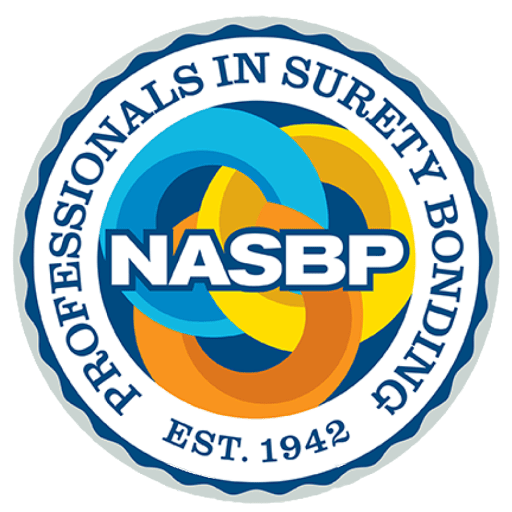NASBP Publications and Reports
Subcontractor Default Insurance
Below are various resources on the topic of subcontractor default insurance (SDI).
- “Managing Subcontractor Risks of Non-Performance and Financial Failure: A Flash Guide to Subcontract Bonds and Subcontractor Default Insurance” — This two-page white paper compares subcontractor bonds with SDI and is a particularly useful and convenient educational tool to provide to owners (and others). In fact, NASBP created this document for just that purpose, and we hope that our Members, Affiliates, Associates, and the general public will use it as an educational tool about the value of surety bonds.
- “Subcontractor Surety Bonding and Default Insurance–The Value (and Risk) of Using Both Resources” — This is a candid perspective from an officer of a large construction firm on his firm’s use of subcontractor default insurance and subcontract bonds.
- “One Contractor’s Transfer Preference: Subcontractor Bonds” — This is an article by an officer of a large construction company on why his company prefers to use subcontract bonds over SDI to address the risk of subcontractor default.
- “SDI Insured Must Shoulder Burden to Pursue Claims Against CGL Policy” — This is an article is by a construction attorney on a recent case that addresses an insured’s obligatory burdens to recover money under a CGL policy for the benefit of the insured’s SDI carrier. The article provides a reminder that with SDI the contractor-insured may have an affirmative responsibility to shoulder the burden and expense in a legal contest between the SDI insurer and the CGL insurer.
- “Managing Subcontractor Risks of Non‐Performance and Financial Failure: A Flash Guide to Subcontract Bonds and Subcontractor Default Insurance“
- “Managing the Risk of Subcontractor Defaults” – This is an article on subcontract bonds and other alternatives by Steve Nelson of SureTec Insurance Co. of Austin, TX.
- “Working on a Subguard Project: Loss of Protection for Subcontractors” — This is an article by Susan McGreevy for NASBP.
- Results of a study conducted by Professor Dennis C. Bausman, Ph. D. of Clemson University on the use, costs, advantages, disadvantages, and impact of SDI on project participants.
Surety Bond Fraud
- Sureties and Bond Producers May Be Liable-for-A-Contractors False Claims Act – Two recent decisions from the United States District Court for the District of Columbia and the United States Court of Federal Claims highlight that sureties and bond producers are not immune to the potentially severe consequences of the False Claims Act (“FCA”) and related federal fraud statutes.Mike Zisa and Susan Elliot of the law firm of Peckar & Abramson Surety Bond Quarterly Winter 2017 edition
- Always Verify Your Bond! – NASBP developed this document in response to the stated interest of its Members, Associates, and Affiliates for many and various educational materials from NASBP and to help combat instances of fraudulent surety bonds through education. The document, Always Verify Your Bond!, is a one-page tool that surety professionals can give to their clients (and refer to themselves), which sets forth a two-step process to help them verify the authenticity of every contract surety bond before acceptance. The two-step process shows them how (1) to check the authority of the surety to issue the surety bond, and (2) to verify that the surety actually authorized the issuance of the surety bond. January 2017 edition.
- Surety Bond Fraud – This is an article published in the Surety Bond Quarterly magazine Winter 2016 and written by Jay Labe, who serves on the NASBP Attorney Advisory Council. Labe is of counsel at the law firm of Allen & Curry, P.C. in Denver, CO.
- The Importance of Surety Bond Verification – This article, coauthored by NASBP’s CEO, Mark H. McCallum, and SFAA’s General Counsel, Edward G. Gallagher, is reprinted with permission from the American Bar Association. The article is from the Public Contract Law Journal, Vol. 39, No. 1 Winter 2010.
- Beware of Inadequate or Fraudulent Surety Bonds – This article, coauthored by NASBP’s then General Counsel and Director of Government Relations, Mark H. McCallum (now NASBP’s CEO), and SFAA’s General Counsel, Edward G. Gallagher, is reprinted with permission from a special advertising section in Engineering News-Record.
- Know Your Bond Before You Sign – This article, coauthored by NASBP’s then General Counsel and Director of Government Relations, Mark H. McCallum (now NASBP’s CEO), and SFAA’s Director of Underwriting and Assistant Counsel, Robert J. Duke, provides insight to certain terms of a bond form, such as language that triggers the surety’s liability, varies the burden of proof, increases the surety’s monetary liability beyond the original penal sum of the bond, limits the surety’s response options, and lengthens the time the surety remains liable. This article was published in the November 2008 issue Construction Business Owner magazine.
- Part 1 Battling Surety Bond Fraud: Why Bond Verification Is So Important – Part 1 of this two part article, written by NASBP’s General Counsel, Martha L. Perkins, was published in the Fall 2014 newsletter of the Fidelity & Surety Law Committee of the American Bar Association’s Tort Trial & Insurance Practice Section.
- Part 2 Battling Surety Bond Fraud: Why Bond Verification Is So Important – Part 2 of this two part article, written by NASBP’s General Counsel, Martha L. Perkins, was published in the Winter 2015 newsletter of the Fidelity & Surety Law Committee of the American Bar Association’s Tort Trial & Insurance Practice Section.
Contract Provisions in Bond Forms and Project Agreements
- 9 Things Savvy Owners Should Know About Surety Bonds – This publication provides nine things construction project owners should understand about surety bonds, including: how bonds help manage project risk effectively, the role of surety bonds, types of surety bonds, who regulates surety bonds, statutory bond requirements, surety bond costs, prequalification through surety bonds, contractual requirements for bonds, and how bonds help ensure project success.
- Why Do Contractors Fail? This piece describes at least six reasons reasons why contractors fail.
- Always Verify Your Bond! – NASBP developed this document in response to the stated interest of its Members, Associates, and Affiliates for many and various educational materials from NASBP and to help combat instances of fraudulent surety bonds through education. The document, Always Verify Your Bond!, is a one-page tool that surety professionals can give to their clients (and refer to themselves), which sets forth a two-step process to help them verify the authenticity of every contract surety bond before acceptance. The two-step process shows them how (1) to check the authority of the surety to issue the surety bond, and (2) to verify that the surety actually authorized the issuance of the surety bond. January 2014 edition.
- The Importance of Surety Bond Verification – This article, coauthored by NASBP’s CEO, Mark H. McCallum, and SFAA’s General Counsel, Edward G. Gallagher, is reprinted with permission from the American Bar Association. The article is from the Public Contract Law Journal, Vol. 39, No. 1 Winter 2010.
- Know Your Bond Before You Sign – This article, coauthored by NASBP’s then General Counsel and Director of Government Relations, Mark H. McCallum (now NASBP’s CEO), and SFAA’s Director of Underwriting and Assistant Counsel, Robert J. Duke, provides insight to certain terms of a bond form, such as language that triggers the surety’s liability, varies the burden of proof, increases the surety’s monetary liability beyond the original penal sum of the bond, limits the surety’s response options, and lengthens the time the surety remains liable. This article was published in the November 2008 issue of Construction Business Owner magazine.
- Contract Terms and Conditions from a Surety Perspective – This article, coauthored by NASBP’s then General Counsel and Director of Government Relations, Mark H. McCallum (now NASBP’s CEO), and SFAA’s Director of Underwriting and Assistant Counsel, Robert J. Duke, describes how a surety company typically reviews the terms of a construction contract to determine its exposure under a performance bond. This article was published in the June 2008 issue of Construction Business Owner magazine.
- Getting Directly to the Point of the Contested Matter: Dispute Mitigation & Resolution in ConsensusDOCS Construction Forms – This article, written by the NASBP’s then General Counsel and Director of Government Relations(now NASBP’s CEO), Mark H. McCallum, describes how the ConsensusDOCS forms use a multi-method, graduated approach to defuse project disputes and how their approach precludes a role for the project design professional as initial arbiter, a point of departure from other industry standard form families. The article was published by the American Bar Association’s Fall 2008 Forum on the Construction Industry.
- The Advantages of ConsensusDOCS Developed Standardized Agreements -This article, coauthored by NASBP’s CEO, Mark H. McCallum, and SFAA’s Associate Counsel, Robert J. Duke, addresses the attributes of the ConsensusDOCS forms that set them apart from other standarized forms. The article was published in the November 2009 issue of Construction Executive magazine.
Miscellaneous
Below are NASBP and other organization’s guides and publications that can assist bond producers, surety underwriters, and contractors with issues they face daily.
|

